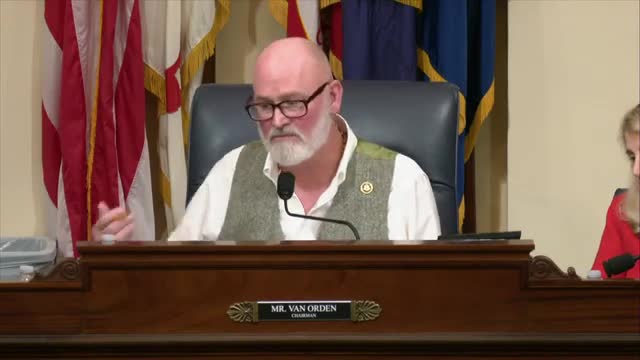Veterans Affairs faces scrutiny over $1 billion IT failures and lack of accountability
September 27, 2024 | Veterans Affairs: House Committee, Standing Committees - House & Senate, Congressional Hearings Compilation
This article was created by AI summarizing key points discussed. AI makes mistakes, so for full details and context, please refer to the video of the full meeting. Please report any errors so we can fix them. Report an error »

The U.S. House Committee on Veterans' Affairs held a Subcommittee on Economic Opportunity Oversight Hearing on September 27, 2024, focusing on the Veterans Affairs Administration's (VA) ongoing challenges with its IT projects and the implications for veterans' services. The meeting highlighted significant concerns regarding the management and execution of major IT initiatives, particularly the digital GI Bill program and the Cerner electronic medical record system.
During the hearing, committee members expressed frustration over the VA's repeated failures in project management, citing a lack of accountability and transparency. A key point of contention was the VA's reported 80% confidence level in completing its projects by 2026, which some members deemed insufficient given the history of cost overruns and delays. The discussion revealed that the VA has spent approximately $16 billion on the Cerner system, which has yet to deliver the expected results.
Committee members criticized the VA for not learning from successful models, such as the Pell Grant system, which operates with a low error rate. They questioned whether the VA had adequately consulted with other federal agencies to improve its planning and execution processes. Witnesses from the VA acknowledged past difficulties but asserted that improvements were being made, including a reduction in processing times for claims.
The hearing also addressed the broader implications of these failures on veterans' care. Members emphasized that wasted funds could have been better allocated to direct services for veterans, particularly in mental health care and support for families of fallen service members. The urgency of the situation was underscored by personal testimonies from committee members about the impact of inadequate services on veterans' lives.
In conclusion, the hearing underscored the critical need for the VA to enhance its project management practices and ensure accountability to prevent further waste of taxpayer dollars. The committee members reiterated their commitment to advocating for veterans and demanded that the VA prioritize effective service delivery over bureaucratic inefficiencies. The next steps involve continued oversight and pressure on the VA to implement the necessary changes to restore confidence in its ability to serve veterans effectively.
During the hearing, committee members expressed frustration over the VA's repeated failures in project management, citing a lack of accountability and transparency. A key point of contention was the VA's reported 80% confidence level in completing its projects by 2026, which some members deemed insufficient given the history of cost overruns and delays. The discussion revealed that the VA has spent approximately $16 billion on the Cerner system, which has yet to deliver the expected results.
Committee members criticized the VA for not learning from successful models, such as the Pell Grant system, which operates with a low error rate. They questioned whether the VA had adequately consulted with other federal agencies to improve its planning and execution processes. Witnesses from the VA acknowledged past difficulties but asserted that improvements were being made, including a reduction in processing times for claims.
The hearing also addressed the broader implications of these failures on veterans' care. Members emphasized that wasted funds could have been better allocated to direct services for veterans, particularly in mental health care and support for families of fallen service members. The urgency of the situation was underscored by personal testimonies from committee members about the impact of inadequate services on veterans' lives.
In conclusion, the hearing underscored the critical need for the VA to enhance its project management practices and ensure accountability to prevent further waste of taxpayer dollars. The committee members reiterated their commitment to advocating for veterans and demanded that the VA prioritize effective service delivery over bureaucratic inefficiencies. The next steps involve continued oversight and pressure on the VA to implement the necessary changes to restore confidence in its ability to serve veterans effectively.
View full meeting
This article is based on a recent meeting—watch the full video and explore the complete transcript for deeper insights into the discussion.
View full meeting